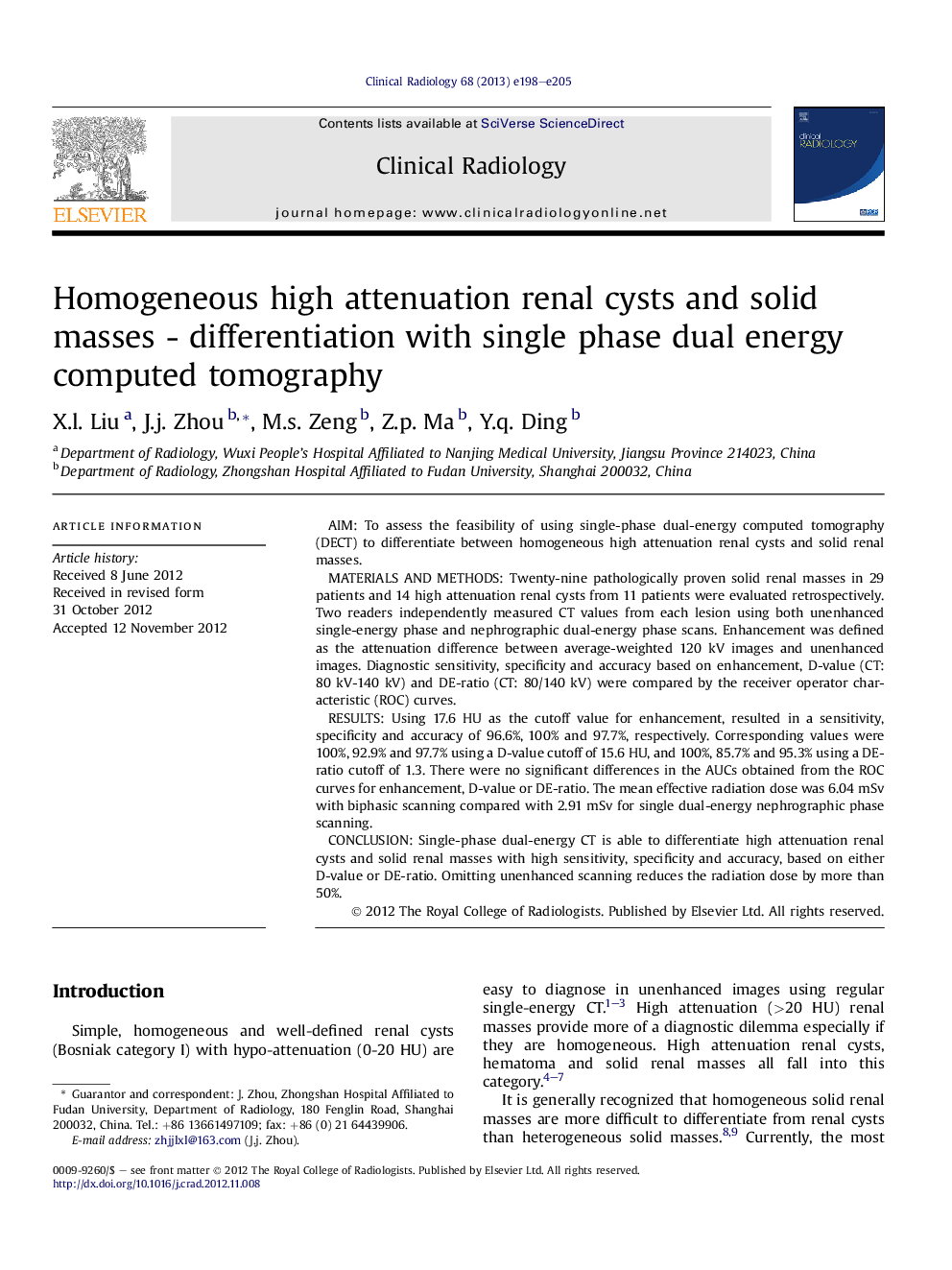| Article ID | Journal | Published Year | Pages | File Type |
|---|---|---|---|---|
| 3981607 | Clinical Radiology | 2013 | 8 Pages |
AimTo assess the feasibility of using single-phase dual-energy computed tomography (DECT) to differentiate between homogeneous high attenuation renal cysts and solid renal masses.Materials and methodsTwenty-nine pathologically proven solid renal masses in 29 patients and 14 high attenuation renal cysts from 11 patients were evaluated retrospectively. Two readers independently measured CT values from each lesion using both unenhanced single-energy phase and nephrographic dual-energy phase scans. Enhancement was defined as the attenuation difference between average-weighted 120 kV images and unenhanced images. Diagnostic sensitivity, specificity and accuracy based on enhancement, D-value (CT: 80 kV-140 kV) and DE-ratio (CT: 80/140 kV) were compared by the receiver operator characteristic (ROC) curves.ResultsUsing 17.6 HU as the cutoff value for enhancement, resulted in a sensitivity, specificity and accuracy of 96.6%, 100% and 97.7%, respectively. Corresponding values were 100%, 92.9% and 97.7% using a D-value cutoff of 15.6 HU, and 100%, 85.7% and 95.3% using a DE-ratio cutoff of 1.3. There were no significant differences in the AUCs obtained from the ROC curves for enhancement, D-value or DE-ratio. The mean effective radiation dose was 6.04 mSv with biphasic scanning compared with 2.91 mSv for single dual-energy nephrographic phase scanning.ConclusionSingle-phase dual-energy CT is able to differentiate high attenuation renal cysts and solid renal masses with high sensitivity, specificity and accuracy, based on either D-value or DE-ratio. Omitting unenhanced scanning reduces the radiation dose by more than 50%.
